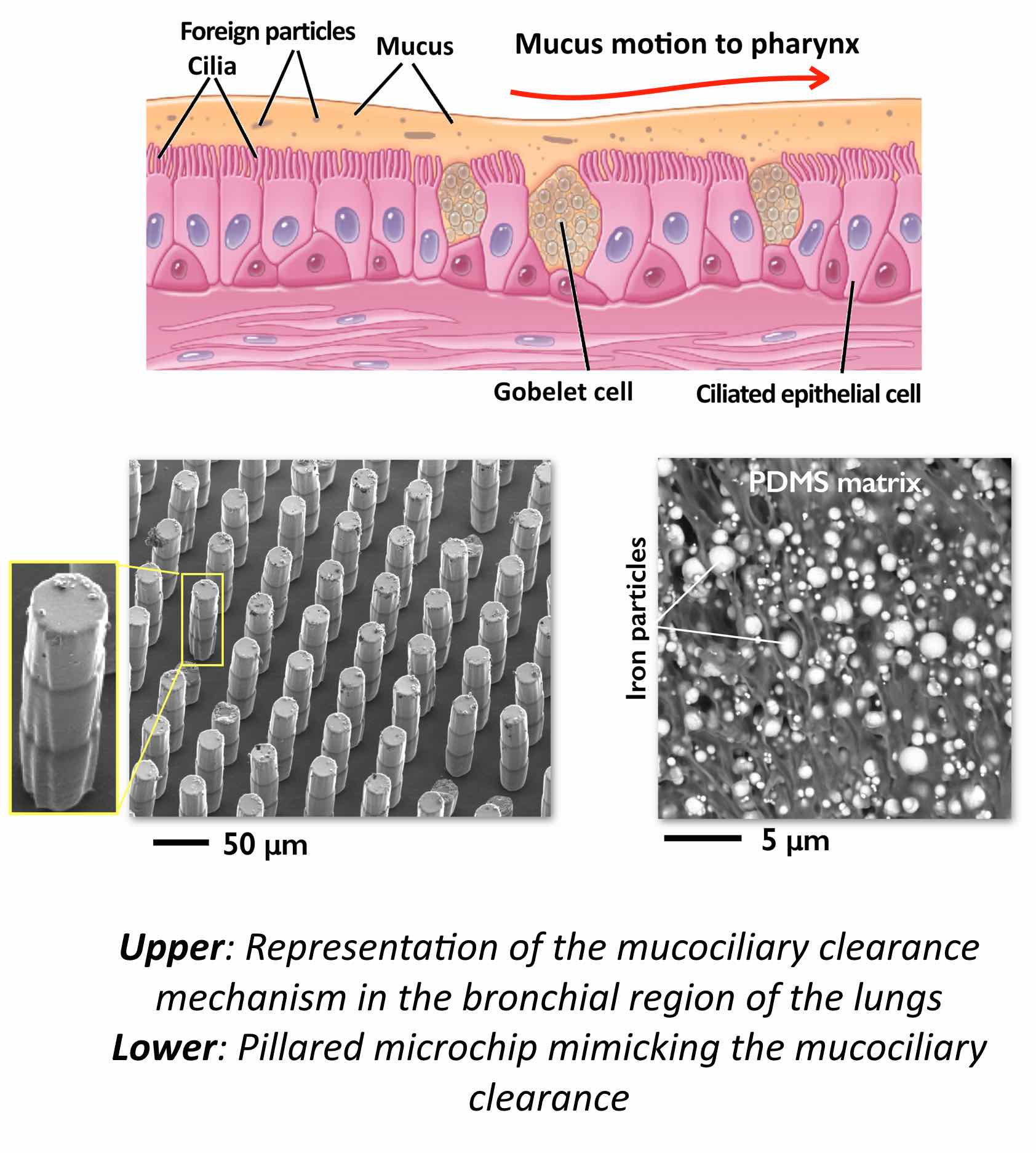PROJECTS 202X
CERIUM OXIDE NANOPARTICLES FOR STROKE TREATMENT
LUNG FLUID STRUCTURE AND RHEOLOGY
MICROFLUIDICS APPROACH OF MUCOCILARY CLEARENCE
BIOMECHANICS OF LIVING CELLS
The projects listed in this section can be the subject of M1 or M2 master internships, doctoral thesis or postdoctorate, depending on funding. If you are interested, please contact Jean-François Berret.
Microfluidics approach of mucociliary clearence
1 – Implementation of a Lung-on-a-Chip Platform

Fine airborne particulate matter is released from production facilities, construction sites and wildfire, and their inhalation is shown to be a major source of premature mortality in the world. Among them, ultra-fine particulate matter and nano-engineered materials (size < 100 nm), namely nanoparticles, cause the most adverse effects due to their accessibility to the distal ends of the lungs. Luckily, the body has defense mechanisms along the upper airways which traps and disposes of inhaled nanoparticles. This barrier is called mucociliary clearance and consists of a mucus layer covering the airway epithelium, and a continuous clearance of mucus from the airways via ciliary waves.
The objectives of the project are to explore the effect of the physical and chemical properties of nanoparticles on their adsorption kinetics, as well as the effect of trapped nanoparticles on the mucus viscoelasticity. For this, we develop a mimic of mucociliary clearance using magnetic micropillars and a microfluidic chip in collaboration with Sorbonne-Université (PHENIX laboratory). This chip will also integrate electromagnets for pillar actuation, accommodate access to mucus deposition and exposure to aerosolized nanoparticles.
A detailed version of the project can be found here.
2 – Applications to the treatment of inflammatory lung diseases
More recently, as part of an ANR (Agence Nationale de la Recherche) project, we have explored the possibility of using the lung-on-chip microfluidic platform to evaluate and optimize drugs delivered locally to the lungs. These drugs are inhaled corticosteroids that can efficiently treat inflammatory lung diseases such as asthma, chronic obstructive pulmonary disease (COPD) and pulmonary fibrosis, as well as some late stages of COVID-19 infection. This collaboration with the University of Paris-Saclay (Institut Galien) aims to evaluate a variety of drug nanocarriers without having to go through expensive animal experimentation.
Two movies are shown below, one describing the strategy used to deflect the magnetic pillars with a micro-manipulator, and the second showing the actual bending of the pillars observed by bright field optical microscopy. Please note that with this technique the pillar deflections are large, of the same order of their height, here 75 µm.
Asymmetric beating of magnetic pillars induced by the saw-tooth motion of a magnet supported by a micro-manipulator
Sequence of optical microscopy images showing a pillar substrate under the application of a magnetic field
REFERENCES
M. Radiom*, Y. He, J. Peng, A. Baeza-Squiban, J.-F. Berret, Y. Chen*
Alveolar mimics with periodic strain and its effect on the cell layer formation
Biotechnology and Bioengineering 117(9), 2827-2841 (2020)
https://doi.org/10.1002/bit.27458
J. Le Digabel, N. Biais, J. Fresnais, J.-F. Berret, P Hersen and B. Ladoux*
Magnetic micropillars as a tool to govern substrate deformations
Lab Chip 11, 2630 (2011)
https://doi.org/10.1039/C1LC20263D